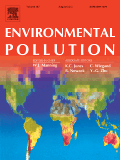
ENVIRONMENTAL POLLUTION
Scope & Guideline
Exploring solutions for a cleaner, healthier planet.
Introduction
Aims and Scopes
- Pollution Impact Assessment:
Research focused on assessing the impacts of various pollutants, including heavy metals, persistent organic pollutants, and microplastics, on environmental and human health. - Contaminant Fate and Transport:
Studies exploring the fate and transport mechanisms of contaminants in different media, such as soil, water, and air, including the interactions with microbial communities. - Innovative Remediation Technologies:
Development and evaluation of new technologies for the remediation of contaminated environments, including the use of biochar, nanoparticles, and advanced oxidation processes. - Ecotoxicology and Risk Assessment:
Research investigating the ecological and health risks associated with exposure to environmental pollutants, including multi-generational and transgenerational effects. - Microbial Ecology and Bioremediation:
Focus on the role of microbial communities in pollutant degradation and the development of bioremediation strategies to mitigate contamination. - Climate Change and Pollution Interactions:
Investigations into how climate change influences pollution dynamics and the effectiveness of environmental management strategies.
Trending and Emerging
- Microplastics and Nanoplastics:
Increasing research on microplastics and nanoplastics, including their sources, ecological impacts, and interactions with other pollutants, reflects growing public and scientific concern. - Pharmaceutical Contaminants:
A surge in studies examining the occurrence, effects, and remediation of pharmaceutical contaminants in various ecosystems highlights the need to address this emerging category of pollutants. - One Health Approach:
Integration of human, animal, and environmental health perspectives is gaining traction, emphasizing the interconnectedness of health and pollution issues. - Advanced Analytical Techniques:
Emerging methodologies, such as machine learning and advanced spectroscopic techniques, are increasingly being utilized for pollutant detection and risk assessment. - Climate Change Interactions:
Research linking climate change effects to pollution dynamics, including the impact of temperature and weather patterns on pollutant behavior and toxicity. - Ecological Restoration and Management:
A rising focus on strategies for restoring ecosystems impacted by pollution, including the use of bioengineering and sustainable practices.
Declining or Waning
- Traditional Heavy Metal Studies:
Research on the impacts of heavy metals, while still relevant, has seen a decline as newer contaminants like microplastics and pharmaceuticals gain attention. - Single-Pollutant Studies:
There is a noticeable shift toward studying the combined effects of multiple pollutants rather than isolating single pollutants, reflecting a more integrated approach to environmental health. - Historical Pollution Trends:
While historical assessments remain important, there is a decreasing emphasis on retrospective studies as funding and interest shift toward current and emerging pollutants. - Localized Pollution Studies:
Research focusing exclusively on localized pollution effects is declining as there is a growing recognition of the need for global perspectives and interconnectedness in environmental issues. - Static Risk Assessment Models:
The traditional static models for assessing environmental risks are being replaced by more dynamic and predictive models that account for changing environmental conditions.
Similar Journals
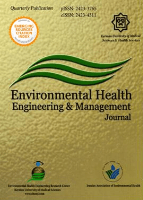
Environmental Health Engineering and Management Journal
Exploring Solutions for Healthier EnvironmentsEnvironmental Health Engineering and Management Journal is a premier platform dedicated to the dissemination of research findings in the essential field of environmental health. Published by Kerman University of Medical Sciences in Iran, this Open Access journal has been a beacon of scientific inquiry since its inception in 2014. With an ISSN of 2423-3765 and E-ISSN 2423-4311, it facilitates broad accessibility to cutting-edge research that addresses the complex interactions between environmental factors and human health. With a notable categorization in the Q3 quartile for Environmental Science and Public Health, alongside Q4 in Chemical Health and Safety, the journal underscores its commitment to quality and relevance. Currently ranked #132 out of 233 in Environmental Science within Scopus, it serves as a crucial resource for researchers and practitioners striving to tackle contemporary environmental challenges. The journal's scope includes innovative methodologies, environmental risk assessment, and sustainable health practices, positioning it as an indispensable reference for those invested in improving public health outcomes through environmental engineering and management.

International Journal of Environmental Research
Advancing knowledge for a sustainable future.Welcome to the International Journal of Environmental Research, a premier publication in the field of environmental science, published by Springer International Publishing AG. With an ISSN of 1735-6865 and an E-ISSN of 2008-2304, this journal has established itself as a vital resource for researchers, professionals, and students committed to advancing the understanding of environmental issues. Since its inception in 2007, the journal has maintained an impressive Q2 ranking in Environmental Science (Miscellaneous) and holds a notable 70th percentile position in the Scopus rankings, reflecting its high-quality contributions and reputation in the academic community. While the journal is not Open Access, it provides a platform for rigorous, peer-reviewed research covering diverse topics in environmental science, thus fostering a collaborative and informed approach to addressing global environmental challenges. Located in Switzerland at Gewerbestrasse 11, Cham CH-6330, the journal is committed to publishing innovative research that informs policy and practice, making it an essential reference point for anyone engaged in the study and management of the environment.
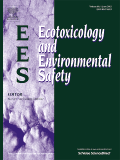
ECOTOXICOLOGY AND ENVIRONMENTAL SAFETY
Bridging science and safety for a greener tomorrow.ECOTOXICOLOGY AND ENVIRONMENTAL SAFETY, published by Academic Press Inc. Elsevier Science, stands as a premier journal in the field of environmental science, specializing in the intricate relationships between toxic substances and ecological systems. With a commendable impact factor and recognized as a Q1 journal in various categories including Health, Toxicology and Mutagenesis, and Public Health, it consistently ranks among the top publications in Scopus, placing it in the 96th percentile for Medicine and Public Health. Established in 1977, this journal addresses critical issues related to environmental safety and pollution, making it an essential resource for researchers, professionals, and students alike. Although it does not offer an open access option, the journal’s commitment to publishing rigorous and impactful research makes it a vital platform for advancing the understanding of ecotoxicological risk assessments and environmental protection strategies. For those dedicated to the intersection of science and public health, ECOTOXICOLOGY AND ENVIRONMENTAL SAFETY serves as a beacon of knowledge and innovative research.

Reviews of Environmental Contamination and Toxicology
Advancing knowledge in environmental health and toxicology.Reviews of Environmental Contamination and Toxicology is a leading journal published by SPRINGER, dedicated to advancing the understanding of environmental science, toxicology, and public health. Since its inception in 1987, this esteemed journal has established itself as an invaluable resource for researchers and practitioners alike, showcasing a wealth of peer-reviewed articles that delve into the complexities of environmental contaminants and their effects on human health and ecosystems. With an impressive impact factor and consistently ranking in the Q1 category across multiple fields including Health, Toxicology and Mutagenesis, as well as Public Health, this journal commands attention, boasting Scopus rankings that place it among the top-tier publications globally. Researchers will find that the journal provides not only in-depth reviews but also practical implications for policy and practice regarding environmental issues. Located in the heart of New York, Reviews of Environmental Contamination and Toxicology is poised to remain at the forefront of this critical field through 2024 and beyond, making it an essential addition to the library of any environmental health scholar or practitioner.

Chemosphere
Fostering interdisciplinary insights for a healthier planet.Chemosphere is a prestigious peer-reviewed journal published by PERGAMON-ELSEVIER SCIENCE LTD, focusing on a wide array of critical topics in the fields of Chemistry, Environmental Science, and Public Health. Since its inception in 1972, the journal has become a vital platform for disseminating groundbreaking research, consistently ranking in the Q1 quartile across multiple categories, including Environmental Chemistry, Health, Toxicology and Mutagenesis, and Pollution. Its esteemed position is underlined by its impressive Scopus rankings, with significant placement in leading subsectors such as Environmental Science and Medicine. Although Chemosphere currently does not offer Open Access options, it remains a valuable resource for researchers and professionals seeking to advance their understanding of chemical interactions and their environmental impacts. The journal serves as an essential asset for students and academics alike, parsing complex issues of pollution, health, and toxicology while fostering inter-disciplinary approaches to remedy global challenges in environmental sustainability.

ACS Environmental Au
Pioneering Open Access Research in Environmental ScienceACS Environmental Au is a leading open-access journal published by the American Chemical Society (ACS), dedicated to advancing research in the environmental sciences. Since its inception in 2021, this journal has quickly established itself in the highly competitive landscape of environmental research, achieving Q1 status across multiple categories—Environmental Engineering, Environmental Science (Miscellaneous), and Water Science and Technology. With a strong Scopus ranking, including Rank #38 in Water Science and Technology representing the top 85th percentile, ACS Environmental Au serves as a vital platform for disseminating high-quality research and innovative solutions to pressing environmental challenges. It is particularly notable for its commitment to accessibility, providing researchers, professionals, and students with open access to critical findings that support sustainable development and environmental stewardship. This journal not only emphasizes rigorous scientific inquiry but also seeks to provoke thoughtful discourse and collaborative initiatives that address global environmental issues.
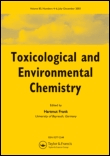
TOXICOLOGICAL AND ENVIRONMENTAL CHEMISTRY
Advancing knowledge at the crossroads of chemistry and health.TOXICOLOGICAL AND ENVIRONMENTAL CHEMISTRY is a pivotal journal published by Taylor & Francis Ltd, addressing critical intersections between environmental chemistry and toxicology since its inception in 1979. With its ISSN 0277-2248 and E-ISSN 1029-0486, the journal serves as a platform for rigorous research and innovative methodologies in pollution control, health implications of environmental chemicals, and the broader spectrum of toxicological studies. Although it currently does not offer open access, the journal's impact in the field is underscored by its Category Quartiles rankings in 2023, placing it in Q3 across Environmental Chemistry, Health, Toxicology and Mutagenesis, and Pollution categories. Furthermore, its Scopus rankings reveal its significant role within the scientific community, specifically in areas such as Environmental Science and Toxicology. The journal aspires to foster multidisciplinary dialogue and advance knowledge that contributes to environmental sustainability and public health, making it an essential resource for researchers, professionals, and students dedicated to these fields.
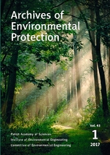
Archives of Environmental Protection
Advancing the Frontiers of Environmental KnowledgeArchives of Environmental Protection, published by the Polish Academy of Sciences, is a pivotal journal in the field of Environmental Science. With an ISSN of 2083-4772 and E-ISSN of 2083-4810, this journal serves as a critical platform for disseminating innovative research and comprehensive reviews that address the complexities surrounding environmental issues. As of 2023, it holds a respectable Q3 ranking in Environmental Science, reflecting its relevance and contribution to the academic community, indicated by a Scopus rank of 124 out of 233 in the General Environmental Science category. Although it operates without Open Access, the journal's consistent publication from 2007 to 2024 emphasizes its commitment to advancing knowledge in diverse areas of environmental protection. Researchers, professionals, and students are encouraged to engage deeply with the wealth of insights offered through the rigorous peer-reviewed articles presented in this journal, which strive to foster sustainable practices and environmental stewardship.

Pollution
Fostering collaboration for a sustainable future.Pollution is a distinguished open-access journal published by UNIV TEHRAN, dedicated to advancing the understanding of environmental science and the multifaceted aspects of pollution research. Since its establishment in 2015, the journal has been committed to disseminating high-quality, peer-reviewed articles that address the pressing issues of environmental degradation globally. With an impact factor and a Scopus rank that places it within the top tier of Environmental Science (Rank #141/233), Pollution serves as an essential resource for researchers, professionals, and students alike. The journal encompasses a wide range of topics, including the sources, effects, and mitigation strategies related to various forms of pollution, thereby aiming to contribute significantly to the scientific community's efforts in promoting environmental sustainability. Its innovative and timely approach positions Pollution as a vital platform for sharing knowledge and fostering interdisciplinary collaboration in the environmental science domain.
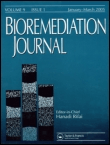
BIOREMEDIATION JOURNAL
Leading the Charge in Bioremediation Science and Application.BIOREMEDIATION JOURNAL, published by Taylor & Francis Inc, is a premier platform for scholars and practitioners in the field of environmental science, specifically focusing on bioremediation processes and their applications. With an impressive impact factor reflected in its Q2 ranking in Environmental Science (miscellaneous category) and a commendable Scopus Ranking of #70 out of 233, this journal serves as an essential resource for advancing knowledge and innovation in the remediation of contaminated environments. Since its inception in 1997, it has fostered the dissemination of high-quality research and technical studies, making significant contributions to our understanding of microbial and biotechnological methods for pollution cleanup. Researchers and professionals seeking to stay at the forefront of bioremediation advancements will find invaluable insights and methodologies within its pages, all accessible through traditional subscription-based options, ensuring a broad distribution of impactful research findings.